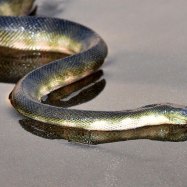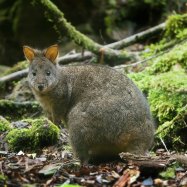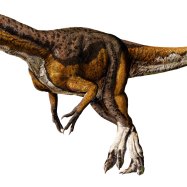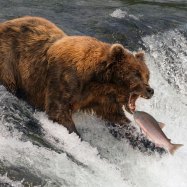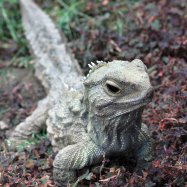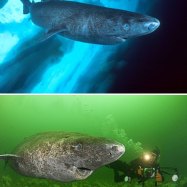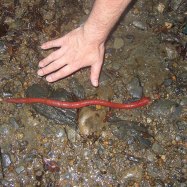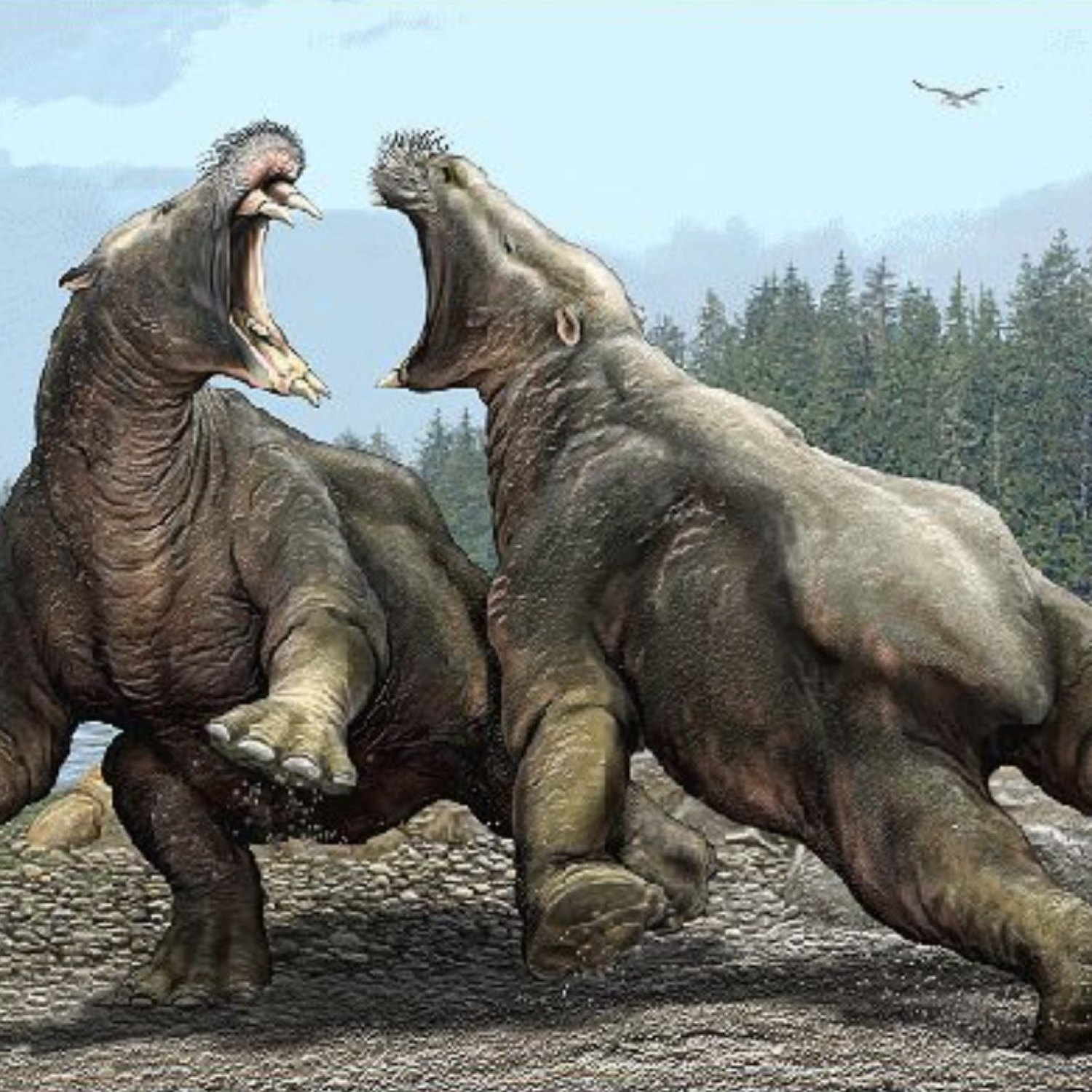
Desmostylus
3 - 4 meters
Meet Desmostylus, a fascinating animal from the Desmostylidae family. With a length of 3-4 meters and a large, stocky body shape, they thrived in shallow coastal waters. These creatures, known for their unique appearance, were an important part of the marine ecosystem. #Desmostylus #Desmostylidae #coastalwaters #marineecosystem #animalfacts
Animal Details Summary:
Common Name: Desmostylus
Kingdom: Animalia
Habitat: Aquatic
The Fascinating Prehistoric Aquatic Mammal: Meet Desmostylus
In the vast and diverse world of animals, there are some that capture our attention and spark our imagination. From the majestic lions to the playful dolphins, we are constantly fascinated by these creatures. But there is one prehistoric animal that is often overlooked – the Desmostylus.Scientifically known as Desmostylus, this aquatic mammal belongs to the order Desmostylia and the family Desmostylidae Desmostylus. It is also commonly known as Desmostylus and was first discovered in North America and Japan.
A Living Fossil
Desmostylus is often referred to as a "living fossil" due to its unique and primitive characteristics. These creatures thrived on this earth between 20 - 10 million years ago, making them one of the earliest known aquatic mammals.They were first discovered in California in the 1880s and continued to intrigue scientists for decades. In the early 20th century, Japanese scientists found fossils of Desmostylus in Japan, leading to the belief that they were mainly found in the North Pacific Ocean.
The Anatomy of Desmostylus
Desmostylus had a large, stocky body that measured about 3-4 meters in length. Its body shape was similar to that of modern-day hippos, with a large head and short legs. These creatures had a thick and robust skeleton and were estimated to weigh around 1,000-1,500 kilograms.While their body shape was similar to that of modern-day hippos, their teeth and skeletal structure were more closely related to that of manatees and dugongs Desert Wolf. They had three pairs of upper and lower incisors, making them unique among other aquatic mammals.
Their nostrils were situated on top of their snout, similar to modern-day dolphins. This adaptation would have allowed them to breathe easily while their body was partially submerged in water.
The Mysterious Color and Diet of Desmostylus
One of the most intriguing aspects of Desmostylus is its unknown coloration. Due to the lack of preserved soft tissues, it is still unknown what color these creatures were. While some scientists speculate that they were dark-colored with lighter undersides, there is no definitive evidence to support this claim.Another mystery surrounding Desmostylus is its feeding method. Based on its teeth, it is believed that these creatures were herbivorous, but what they ate specifically is still a mystery. Many theories have been proposed, including eating seaweed or seagrass, but more research is needed to confirm these assumptions.
Adapted to Aquatic Life
Desmostylus was perfectly adapted to its aquatic habitat. Its robust skeleton and short legs would have allowed it to maneuver easily through the shallow coastal waters where they were found. The position of its nostrils also indicates that it spent most of its time partially submerged in water, similar to modern-day hippos.Geographical Distribution
As mentioned earlier, Desmostylus fossils have been found in North America and Japan, making these two countries their country of origin. In North America, evidence shows they were found in California, Oregon, and British Columbia. While in Japan, they were found in Honshu, the main island of Japan.The fossils discovered in Japan were in much better condition, allowing scientists to gain a deeper understanding of Desmostylus. However, the specimens found in North America were more abundant, indicating a larger population in that area.
The Extinction of Desmostylus
While the reason for the extinction of Desmostylus is still unknown, many theories have been proposed. It is believed that the changing climate and environment during the late Miocene era could have contributed to their demise. The emergence of other aquatic mammals, such as whales and sea lions, could also have been a threat to their survival.Another theory proposes that the convergence of land bridges connecting North America and Asia during that time could have introduced new predators, leading to the decline of the Desmostylus population.
A Window into the Past
Aside from its unique anatomy, Desmostylus provides us with a fascinating glimpse into the past. Its discovery and study have greatly contributed to our understanding of the evolution of aquatic mammals.The fact that these creatures thrived millions of years ago and were able to adapt and survive in their aquatic environment is awe-inspiring. It goes to show the resilience and the incredible capabilities of these creatures.
The Importance of Protecting Marine Life
The story of Desmostylus is a reminder of the importance of preserving and protecting marine life. As we continue to explore and uncover the mysteries of the ocean, we must also be mindful of our impact on its inhabitants.Our actions, such as overfishing and pollution, can have a devastating effect on the marine ecosystem. It is our responsibility to ensure the survival of these creatures by making conscious decisions about our actions.
Conclusion
In conclusion, Desmostylus is a remarkable aquatic mammal that has left its mark in the history of evolution. Its unique features and adaptability make it a fascinating subject for scientific research and a reminder of the diversity of life on this planet.Despite their extinction, their discovery and study continue to intrigue scientists, and with every new evidence, we uncover more about their life and habitat. As we continue to strive for a better understanding of the natural world, we must also remember to protect and preserve it for future generations.

Desmostylus
Animal Details Desmostylus - Scientific Name: Desmostylus
- Category: Animals D
- Scientific Name: Desmostylus
- Common Name: Desmostylus
- Kingdom: Animalia
- Phylum: Chordata
- Class: Mammalia
- Order: Desmostylia
- Family: Desmostylidae
- Habitat: Aquatic
- Feeding Method: Herbivorous
- Geographical Distribution: North America, Japan
- Country of Origin: United States, Canada, Japan
- Location: Shallow coastal waters
- Animal Coloration: Unknown
- Body Shape: Large and stocky
- Length: 3 - 4 meters
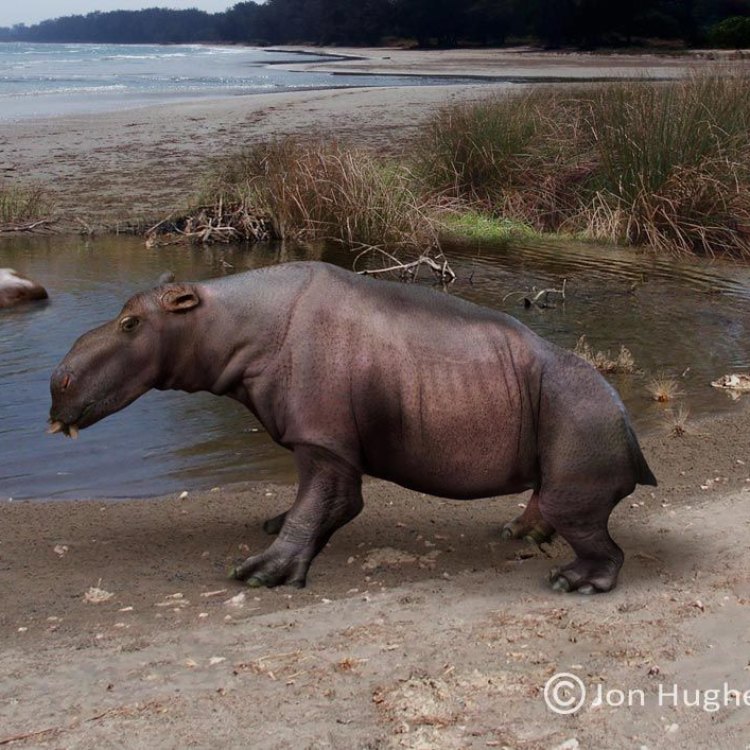
Desmostylus
- Adult Size: Unknown
- Average Lifespan: Unknown
- Reproduction: Unknown
- Reproductive Behavior: Unknown
- Sound or Call: Unknown
- Migration Pattern: Unknown
- Social Groups: Unknown
- Behavior: Unknown
- Threats: Extinction
- Conservation Status: Extinct
- Impact on Ecosystem: Unknown
- Human Use: None
- Distinctive Features: Large size, unique tooth structure
- Interesting Facts: Desmostylus is an extinct marine mammal that lived during the Oligocene and Miocene epochs. It had a large stocky body and is believed to have been herbivorous, feeding on seaweed and other aquatic plants. Its teeth were unique, with high crowns and ridges, suggesting a specialized diet. Desmostylus was mainly found in shallow coastal waters and its fossils have been discovered in North America and Japan. Unfortunately, Desmostylus is now extinct and its reproduction, lifespan, behavior, and other aspects of its biology are largely unknown.
- Predator: Unknown
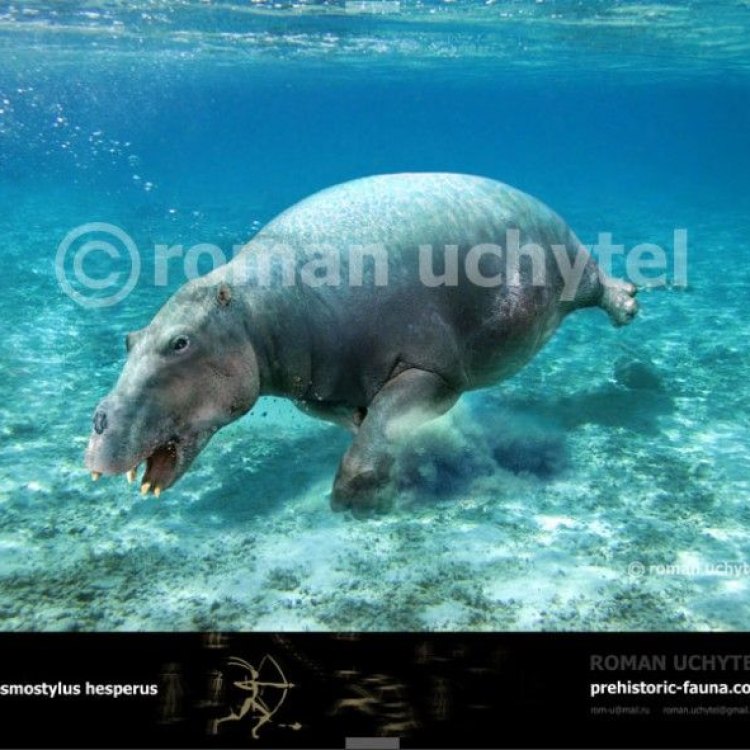
Desmostylus
The Mighty Desmostylus: A Fascinating Extinct Marine Mammal
What comes to mind when you think of marine mammals? Perhaps you think of graceful dolphins, playful seals, or majestic whales. But what about the Desmostylus? This extinct marine mammal is not as well-known as its modern counterparts, but it had its own unique and fascinating features that set it apart.Desmostylus, also known as the "mighty mouse" or "mouse-cow", was a large herbivorous marine mammal that lived during the Oligocene and Miocene epochs, spanning from approximately 33.9 million to 5 PeaceOfAnimals.Com.3 million years ago. Its name comes from the Greek words "desmos" meaning "bond" and "stylus" meaning "pillar", referring to its unique tooth structure.
While its exact adult size is unknown, it is estimated that Desmostylus was around 2-3 meters long and weighed between 200-300 kilograms, making it about the size of a modern-day panda. Its stocky and compact body was supported by short and thick limbs, giving it a bulky appearance.
One of the most distinctive features of Desmostylus was its teeth. Unlike other marine mammals, which have flat and smooth teeth for catching slippery prey, Desmostylus had teeth with high crowns and ridges. These teeth suggest that Desmostylus had a specialized diet, possibly feeding on seaweed and other aquatic plants. Its strong teeth also may have been used for crushing shells and other hard food items.
Desmostylus was mainly found in shallow coastal waters, as its fossils have been discovered in marine sediments in North America and Japan Dhole. It is believed that Desmostylus was a solitary animal and did not live in large social groups. Little is known about its behavior, migration patterns, or reproductive behavior due to the scarcity of fossils.
Sadly, Desmostylus is now extinct, and the reasons behind its extinction are unknown. The lack of information on its behavior and reproduction makes it difficult to understand what may have caused its disappearance, but it is believed that changes in the marine environment, such as shifting sea levels and temperature changes, could have played a role.
The extinction of Desmostylus occurred during the late Miocene, a period when many marine mammals went extinct due to changes in their environment. This extinction event is known as the "Late Miocene extinction" and wiped out around 30% of marine mammal species. Desmostylus was one of those unfortunate species that did not survive.
Desmostylus fossils have been found in various geological formations in North America and Japan, and each fossil has provided valuable information about this enigmatic creature. The first Desmostylus fossil was discovered in 1887 in Northern California by paleontologist Othniel Charles Marsh. At the time, it was believed to be a type of ancient hippopotamus, but later, it was recognized as a new and unique marine mammal species.
Recently, in 2019, a remarkably well-preserved Desmostylus skull was unveiled by scientists in Japan. The fossil was found in the Akasaki Formation in the Nagasaki Prefecture and is the first complete skull ever discovered of this extinct species. This discovery has shed new light on the anatomy and evolution of Desmostylus, providing vital insights into its diet and lifestyle.
The extinction of Desmostylus has not only affected the species itself but also has had an impact on the ecosystem. Due to its large size and herbivorous diet, Desmostylus played a crucial role in maintaining the balance of marine food webs. Its absence has likely had ripple effects on the marine ecosystem, as other species had to adapt to the loss of this important player.
While Desmostylus has not had a direct impact on human use, its fossils have been used for scientific research and displayed in museums around the world. These fossil discoveries continue to provide valuable insights into the evolution and extinction of this unique and mysterious marine mammal.
In conclusion, Desmostylus, the "mighty mouse" of the seas, was an elusive and enigmatic creature that lived millions of years ago. With its large size, unique tooth structure, and unknown behavior, it has captivated the curiosity of scientists and the general public alike. Despite its extinction, Desmostylus continues to leave a strong impression on our understanding of the natural world and the importance of preserving biodiversity.
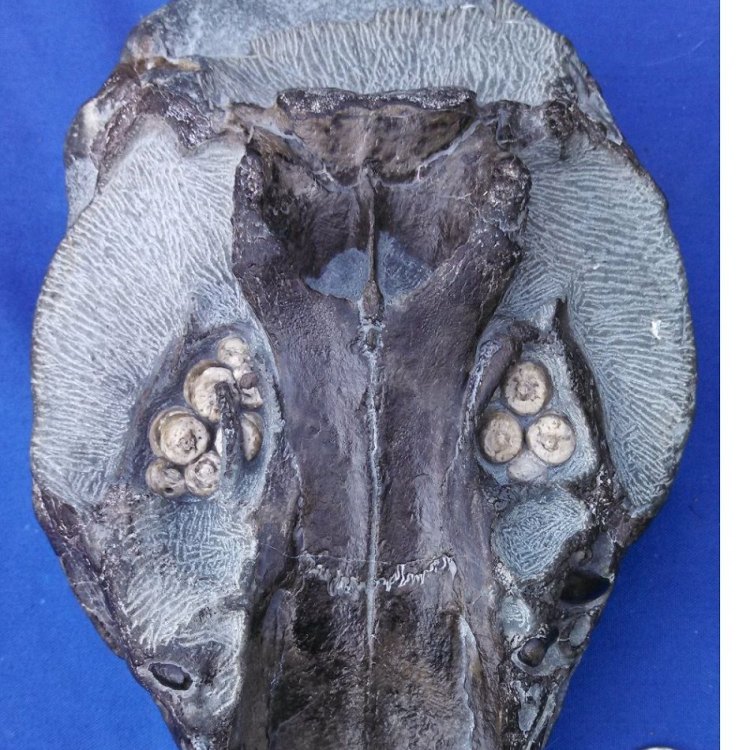
The Fascinating Prehistoric Aquatic Mammal: Meet Desmostylus
Disclaimer: The content provided is for informational purposes only. We cannot guarantee the accuracy of the information on this page 100%. All information provided here may change without prior notice.


